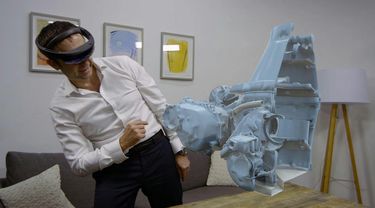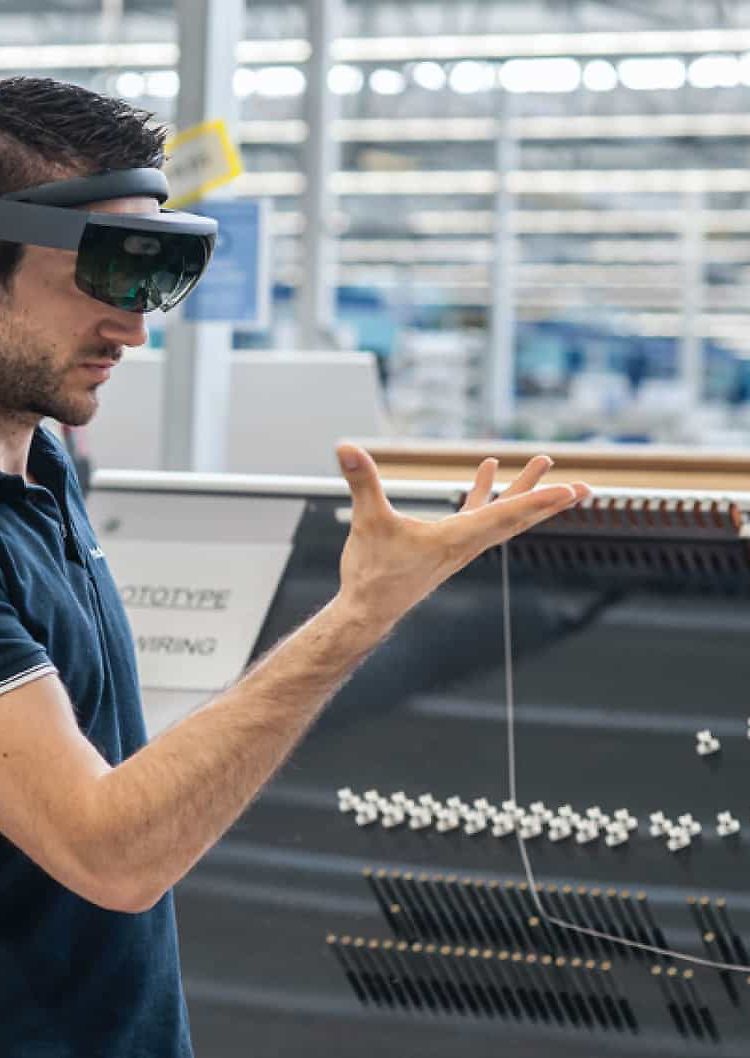As a company, there are few things more exciting than technologies with the power to completely transform how we work. Some of the most promising and impactful innovations can be found with virtual, augmented and mixed reality (VR, AR and MR). Our Airbus Holographic Academies are now taking these technologies to the next level through prototyping and implementation of the most encouraging ideas.
AR, VR and MR technologies have been well known at Airbus for years: heads-up displays support pilots during certain flight phases and we have already designed and deployed VR software tools throughout the aircraft design process. Taking advantage of CAD data, engineers can use VR to see, interact with and adjust 3D digital models, before the parts are actually made. The value it brings is significant: we can simulate and reproduce situations in a safe, normalised environment that would otherwise be costly, complex or even dangerous.
On the digital shop floor, augmented reality can project data, information and design details to help with construction and inspection processes. Since 2011, our engineers and operators have used a hand-held device that displays a 3D model on top of the real aircraft, providing valuable insight into size and positioning. Sensors track the environment and user movements and send video feeds to view the digital and physical structure combined.
This approach can be a major time-saver. The inspection time of 60,000 brackets used on an Airbus A380 fuselage, for instance, has dropped from three weeks to just three days.

In the last decade, VR and AR technologies have become more mobile, affordable and easy to use than ever, freeing up potential to completely transform many areas. To harness this potential, the Holographic Academies are paving the way for global adoption and innovation programmes, with more than 250 different use cases identified to date across the company.
For example, VR is transforming how people interact with our data. Very soon, any Airbus employee will be able to access digital aircraft data and use a Rift or Vive headset to pull out a 3D digital model and view it from any angle to quickly review space accessibility, maintenance processes or simply test a new design.
Thanks to the Microsoft HoloLens augmented reality glasses, our electrical teams can view the different parts of a virtual harness cable superimposed on top of the actual aircraft. This hands-free guidance makes things quicker, easier and more comfortable for operators, enabling a 25% quicker installation.
And the possibilities extend much wider: our marketing team is currently testing a holographic application combining a physical and virtual cabin to configure and customise cabin space in real time. Internally, our HR team is using AR to introduce new employees to the company in a more immersive and engaging way. We can also better share information in training sessions by delivering complex technical lessons to a group through interactive, shared 3D, or even provide training via holographic coach.
The Airbus Holographic Academies are forming strategic partnerships to gain access to pre-market virtual, augmented and mixed reality technologies. Our HoloLens cooperation with Microsoft, including the Microsoft Mixed Reality Partner Program, allows us to better understand the technology’s capabilities and leverage its vast potential.
This combination of technologies is mapping out an exciting journey. Because of their wide-ranging potential, we are focusing on implementation enablers to make them a standard tool for employees across the company.
